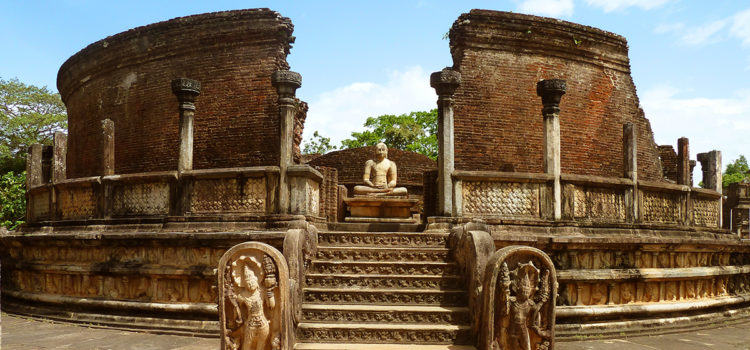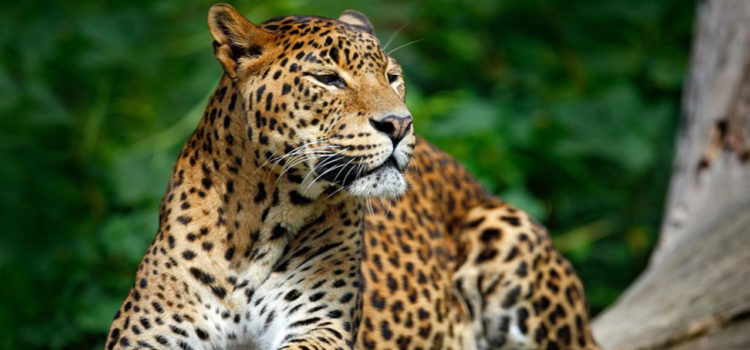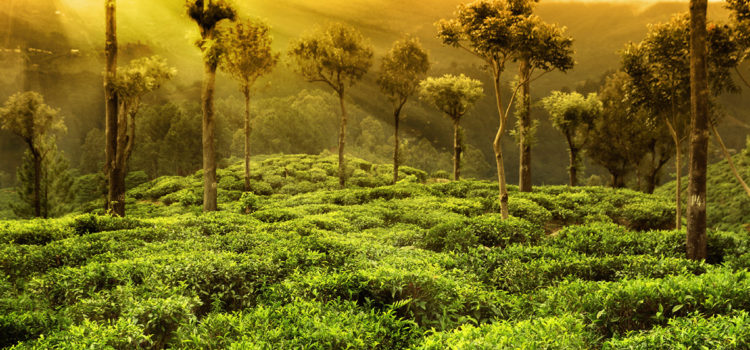Wonder of Asia
Seductive beaches and tempting water sports, magnificent landscapes featuring lazy lagoons, fertile wetlands, ecologically-wondrous types of forest, imposing mountains, bounteous rivers and waterfalls, an abundance of wildlife – much of it endemic – unique ecosystems, inspiring heritage sites from ancient cities to colonial forts, a vibrant culture including fine arts and crafts and grand festivals, and a people of diverse ethnicity and religious persuasion, charming and hospitable.
Contemporary tourist attractions such as luxurious Ayurveda spas and broad-based shopping opportunities have evolved, and Sri Lanka has become one of the world’s most popular destinations to get married and enjoy a honeymoon.
No wonder Sri Lanka is the wonder of Asia.
Gondwanaland and beyond
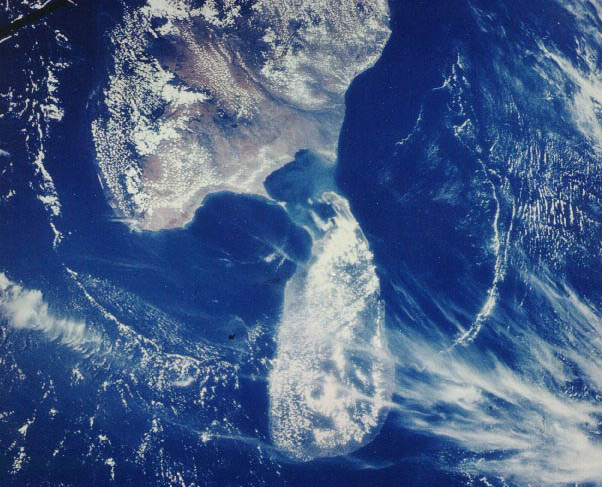
It’s been so since the dawn of time. One hundred and sixty-six million years ago, Sri Lanka was situated far south, nestled next to India and Madagascar in the very centre of the super-continent known as Gondwanaland. India and Sri Lanka, then linked, drifted northwards until this chunk of land impacted with Asia, creating the Himalayas. Later the bridge of limestone shoals that linked Sri Lanka with India mostly submerged, leaving a 30km divide.
Pearl, teardrop, mango
And so was born an island with a distinctive shape, described as “the pearl in the necklace of India”, and likened to a teardrop, mango, pear and even a German type of ham – Westphalian. All these resemblances can be recognized most appealingly in pictures from space. Other likenesses are apparent when areas of the island are isolated: Mannar becomes a perfect dinosaur claw, and the northern peninsula the head of a dugong, an endangered species that inhabits these waters.
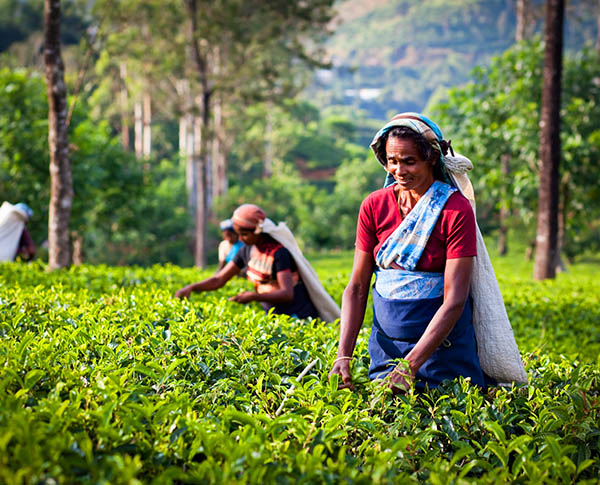
The Stone Age
The human history of this island naturally began with its Stone Age – in thisinstance, remarkably, around 125,000 BC. Artifacts including stone tools unearthed date back several tens of thousands of years. Fifteen thousand years ago, wheat and barley were grown on mountain plateau. Early man appears to have widespread, inhabiting the coast, the plains and the hill country. The Balangoda Manwas unearthed in caves, and the earliest evidence of steel-making in the ancient world, dating to the 3rd c. BC – in England it was the 14th c.AD! – has been found on a hillside where the wind was used to enhance the furnace heat.
The third c. BC was pivotal because of the arrival of Buddhism, which became the basis on which the country’s civilization was structured. Legend has it that in 6th century BC, a certain Prince Vijaya was banished from his Indian kingdom, sailed to Sri Lanka, became the island’s first king and founded the Sinhalese race. The first Sinhalese kingdom developed around the city of Anuradhapura in the 3rd c. BC. From the 5th to the 14th c AD invasions from southern India pushed the capital into remote places before it became established at Kandy. From 1505 to 1948 the island endured another multiplicity – occupancy and degrees of repression and manipulation by no less than three colonial powers, Portugal, Holland and Britain. In 1978, the country became the Democratic Socialist Republic of Sri Lanka.
The People

Sri Lanka is a multi-ethnic, multi-religious and multi-cultural society, a reflection of successive waves of foreign immigrants. The main ethnic groups today are the Sinhalese and Tamils. Then there are Muslims, the Malays and Chinese along with the Dutch Burghers.
Whatever their situation in society, the people of Sri Lanka possess a warm and friendly nature reflected in persistent smiling faces and eagerness to help those unfamiliar with aspects of local life. You’ll find that Sri Lankans are particularly charming and hospitable.
Shopping
The commodity most famously associated with Sri Lanka is tea – or more precisely Ceylon tea. Indeed, the country is the world’s third largest producer of tea. If you wish to purchase the finest, freshest tea – black, green or white – visit an estate and witness how the green leaves are processed to become the product you encounter in the kitchen. Similarly, Sri Lanka’s renowned spices – cinnamon, cardamom, cloves – should be purchased at a spice garden.

Seductive beaches and tempting water sports, magnificent landscapes featuring lazy lagoons, fertile wetlands, ecologically-wondrous types of forest, imposing mountains, bounteous rivers and waterfalls, an abundance of wildlife – much of it endemic – unique ecosystems, inspiring heritage sites from ancient cities to colonial forts, a vibrant culture including fine arts and crafts and grand festivals, and a people of diverse ethnicity and religious persuasion, charming and hospitable.
Contemporary tourist attractions such as luxurious Ayurveda spas and broad-based shopping opportunities have evolved, and Sri Lanka has become one of the world’s most popular destinations to get married and enjoy a honeymoon.
No wonder Sri Lanka is the wonder of Asia.
Gondwanaland and beyond

It’s been so since the dawn of time. One hundred and sixty-six million years ago, Sri Lanka was situated far south, nestled next to India and Madagascar in the very centre of the super-continent known as Gondwanaland. India and Sri Lanka, then linked, drifted northwards until this chunk of land impacted with Asia, creating the Himalayas. Later the bridge of limestone shoals that linked Sri Lanka with India mostly submerged, leaving a 30km divide.
Pearl, teardrop, mango
And so was born an island with a distinctive shape, described as “the pearl in the necklace of India”, and likened to a teardrop, mango, pear and even a German type of ham – Westphalian. All these resemblances can be recognized most appealingly in pictures from space. Other likenesses are apparent when areas of the island are isolated: Mannar becomes a perfect dinosaur claw, and the northern peninsula the head of a dugong, an endangered species that inhabits these waters.

The Stone Age
The human history of this island naturally began with its Stone Age – in this instance, remarkably, around 125,000 BC. Artifacts including stone tools unearthed date back several tens of thousands of years. Fifteen thousand years ago, wheat and barley were grown on the mountains plateau. The eariy man appears to have widespread, inhabiting the coast, the plains and the hill country. The Balangoda Man was unearthed in caves, and the earliest evidence of steel-making in the ancient world, dating to the 3rd c. BC – in England it was the 14th c.AD! – has been found on a hillside where the wind was used to enhance the furnace heat.
The third c. BC was pivotal because of the arrival of Buddhism, which became the basis on which the country’s civilization was structured. Legend has it that in 6th century BC, a certain Prince Vijaya was banished from his Indian kingdom, sailed to Sri Lanka, became the island’s first king and founded the Sinhalese race. The first Sinhalese kingdom developed around the city of Anuradhapura in the 3rd c. BC. From the 5th to the 14th c AD invasions from southern India pushed the capital into remote places before it became established at Kandy. From 1505 to 1948 the island endured another multiplicity – occupancy and degrees of repression and manipulation by no less than three colonial powers, Portugal, Holland and Britain. In 1978, the country became the Democratic Socialist Republic of Sri Lanka.
The People

Sri Lanka is a multi-ethnic, multi-religious and multi-cultural society, a reflection of successive waves of foreign immigrants. The main ethnic groups today are the Sinhalese and Tamils. Then there are Muslims, the Malays and Chinese along with the Dutch Burghers.
Whatever their situation in society, the people of Sri Lanka possess a warm and friendly nature reflected in persistent smiling faces and eagerness to help those unfamiliar with aspects of local life. You’ll find that Sri Lankans are particularly charming and hospitable.
Shopping
The commodity most famously associated with Sri Lanka is tea – or more precisely Ceylon tea. Indeed, the country is the world’s third largest producer of tea. If you wish to purchase the finest, freshest tea – black, green or white – visit an estate and witness how the green leaves are processed to become the product you encounter in the kitchen. Similarly, Sri Lanka’s renowned spices – cinnamon, cardamom, cloves – should be purchased at a spice garden.

Nature & Wildlife
As the sun sinks toward the distant horizon, the elephants begin to emerge from the scrub vegetation and move solemnly toward the water of a lake. It is September, towards the end of the dry season, and most water sources have long since disappeared. The Minneriya tank, however, retains water throughout the parched months and the now-exposed tank bed is flourishing, the fresh growth attracting herds of elephants from near and far.
The gentle, charismatic giants congregate here every year at this time, their numbers sometimes exceeding 300. To see so many together –playing, eating, swimming, looking for mates –is nothing but breathtaking. That this occurs very near to the physical centre of a fairly diminutive, densely-populated and compact island is symbolic of the elephant’s indigenous importance.
The crowded ecological stage
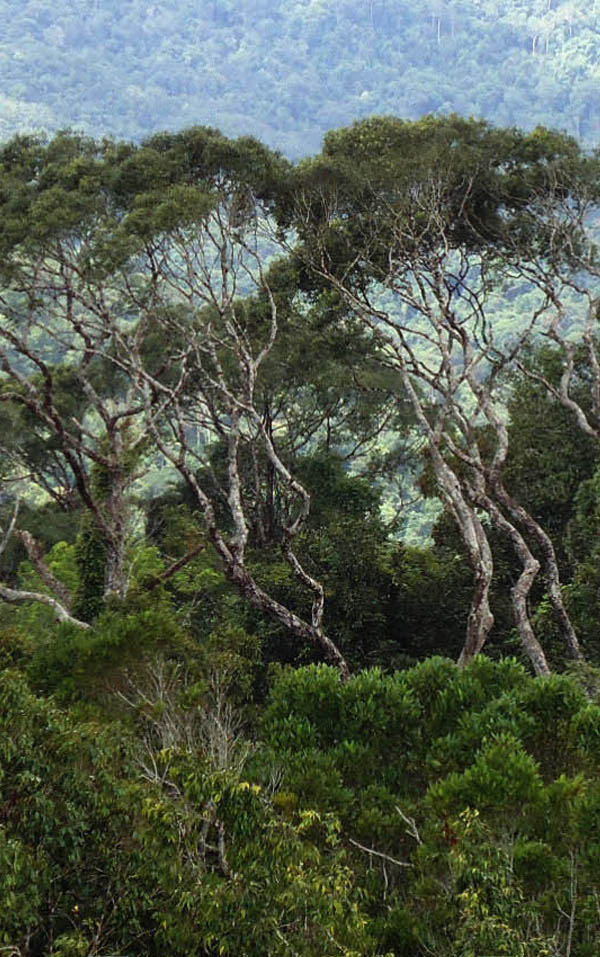
Elephants may be the most celebrated of Sri Lanka’s diverse wildlife, but they actually represent just one actor on a crowded ecological stage. For instance, this is one of the best places in the world to see the elusive leopard, and one of the only places where the big cat is top predator in the system – the king of the Sri Lankan jungle. With striking markings, a sleek, powerful body, and graceful movements, the leopard is thrilling to observe – try Yala National Park in the south-east coastal and zone.
The final member of Sri Lanka’s ‘big three’ is the sloth-bear, a shaggy, shambling denizen of the dry zone forests whose elongated snout and scimitar-like claws are ideally adapted for extracting termites from their mounds. In May and June they take to the trees – a fantastic if incongruous sight! – to feed on the sweet yellow fruits of the palu tree. Wasgamuwa National Park is one of the best places on the island to have the pleasure of a sloth-bear encounter.
As the sun sinks toward the distant horizon, the elephants begin to emerge from the scrub vegetation and move solemnly toward the water of a lake. It is September, towards the end of the dry season, and most water sources have long since disappeared. The Minneriya tank, however, retains water throughout the parched months and the now-exposed tank bed is flourishing, the fresh growth attracting herds of elephants from near and far.
The gentle, charismatic giants congregate here every year at this time, their numbers sometimes exceeding 300. To see so many together –playing, eating, swimming, looking for mates –is nothing but breathtaking. That this occurs very near to the physical centre of a fairly diminutive, densely-populated and compact island is symbolic of the elephant’s indigenous importance.
The crowded ecological stage

Elephants may be the most celebrated of Sri Lanka’s diverse wildlife, but they actually represent just one actor on a crowded ecological stage. For instance, this is one of the best places in the world to see the elusive leopard, and one of the only places where the big cat is top predator in the system – the king of the Sri Lankan jungle. With striking markings, a sleek, powerful body, and graceful movements, the leopard is thrilling to observe – try Yala National Park in the south-east coastal and zone.
The final member of Sri Lanka’s ‘big three’ is the sloth-bear, a shaggy, shambling denizen of the dry zone forests whose elongated snout and scimitar-like claws are ideally adapted for extracting termites from their mounds. In May and June they take to the trees – a fantastic if incongruous sight! – to feed on the sweet yellow fruits of the palu tree. Wasgamuwa National Park is one of the best places on the island to have the pleasure of a sloth-bear encounter.
Furry, scaled and feathered creatures
Sri Lanka’s varied forests abound with a dizzying assortment of other furry, scaled and feathered creatures. There are five species of deer, ranging from the diminutive mouse deer – just 30cm in height and armed with elongated canine teeth – to the sambar, a large, stately species in which the bull grows impressively large antlers. The latter are best seen in the high, open area surrounding Horton Plains,where they gather in the crisp evenings to feed on the long grasses – and gain protection in numbers from leopards on the stalk.
Civets, mongooses, porcupines and three species of small cats roam the forest floor, while up in the trees primates reign. The widely – spread toque macaque is an archetypal monkey – active, acrobatic and not a little mischievous in Polonnaruwa they live among the ruins of ancient temples and palaces, where the young gambol on stone walls 1,000-years old. Grey langurs, members of the tribe of the monkey-god Hanuman of the Hindu epic poem, the Ramayana, inhabit the dry lowlands and are often to be seen in large troops, pigeon-toed as they cross open ground, their long tails held partially erect in unintentional mimicry of a question-mark.
Often heard reverberating across the forested upper slopes of the central hills in the early morning is the booming call of the ‘bear’ monkey, a sub-species of the purple-faced langur, whose name derives from its shaggy bulk. The loris, smallest of the island’s primates, is also the most unusual, an enigmatic nocturnal hunter with spindly legs and large, luminous eyes. It possesses a unique, high-pitched call that pierces the stillness of the tropical night, sending shivers down the spine.
Even more evocative is the blood –curdling shriek of the Spot-bellied Forest Eagle Owl, locally known as the ulama or “devil-bird”. This is the largest and one of the rarest of Sri Lanka’s dozen owl species and part of a rich avifaunal community of 482 species that are either residents or visitors to the island, including 33 endemic species (as an island, Sri Lanka is home to numerous endemic species that evolved in isolation from mainland populations and thus developed their own distinctive characteristics).
Sri Lanka’s birdlife is astonishing, which is why ornithologists and amateur bird watchers worldwide flock here to take in such dazzling encounters as a flamboyant peacock strutting like a courtier, trying to impress the hens with his upright shimmering tail feathers, and a White-bellied Sea Eagle swooping from his perch on a half-submerged tree, diving low over an inland tank to pluck a fish from the glittering water. And not forgetting a Sri Lankan Paradise Flycatcher flitting from perch to perch its amazingly long tail feathers bobbing behind it like a chestnut ribbon.
Hornbills are seen nesting in hollowed tree trunks, completely sealed in except for a small hole sufficient only for their partners to insert food while noisy flocks of parakeets speckle the blue sky green. In Sinharaja Forest Reserve and other wet Zone forests, mixed feeding flocks feature prominently, with many species travelling together through the forest plucking insects from the air, pulling grubs from tree-trunks and sipping nectar from flowers.
On a similar scale, the island abounds with a wonderful diversity of creatures seen from the comfort of a poolside lounger or as one strolls through town. Butterflies dip and flutter on delicate wings vibrantly hued to draw attention or painted in more muted tones to deflect the same. Gaudy dragonflies hover on rigid, translucent wings while ethereal damselflies dance amid the foliage. Spiders, like tine gemstones, wait patiently in gauzy webs that shimmer, dew-drenched in the early morning sunshine.
The underwater world is kaleidoscopic array
On a breezy, tropical night, the coastline, illuminated by the light of the full moon, a small section on of a beach begins to gently quiver. Suddenly, from amid the shifting grains of sand, emerges first one, then another and another tiny black form, and their curved carapaces glinting softly.
These creatures are the leatherback sea turtle hatchlings, perfect miniature replicas of their parents, which immediately scuttle down the beach towards the sea, so beginning a remarkable battle for survival that, like the island upon whose shores they begin life, represents a perfect blend of ocean and land, water and earth.
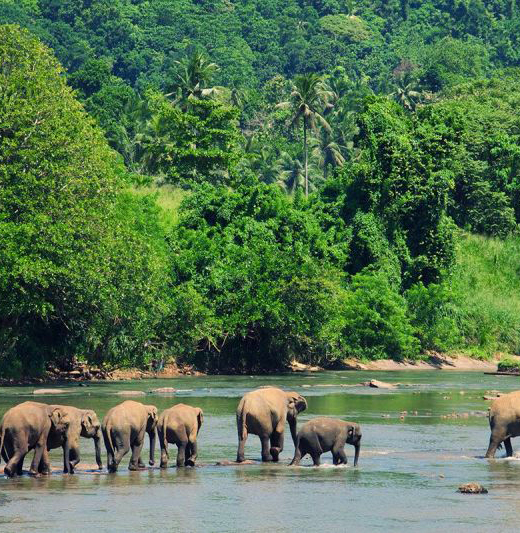
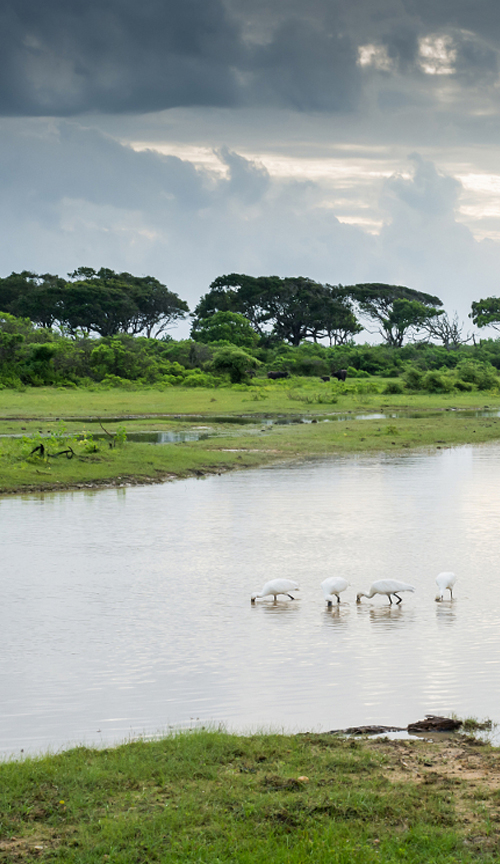
Further out from shore the wildlife diversity is no less extraordinary. The underwater world is a kaleidoscopic array of fish and coral. Electric blues, incandescent purples, radiant yellows and everything in between can be seen in deep sea caves, hovering around ancient sunken wrecks and on sheer rock walls that drop into the endless blue depths. This treasure trove of life can be visited throughout the year since the conditions are always ideal on at least one of the coasts!
Above the waterline whales breach the surface, offering tantalizing glimpses or longer, lingering views. To share into the eye of one of these mysterious, huge animals, regarding it as it regards to you, is to look back to the beginning of time. Blue whales, the largest animal on the planet, are seen off south coast Mirissa from November to May, as are Humpback and sperm whales, while on the north-west coast, off the Kalpitiya peninsula, dolphins by the score cut through the brilliant blue sea, leaping, spinning, frolicking – and even allowing lucky onlookers to share the warm waters with them.
Sand dune to cloud forest, tree frog to elephant
Sri Lanka is like a children’s story book creation: palm-fringed beaches ring a heavily-forested interior, which in turn rises majestically to form a rugged, mountainous core. Monsoon winds lash this island twice a year, the orientation and the rains they bring are responsible for determining the eco-regions that characterize the island.
Most of the broad lowland plain is the dry zone, with tall monsoonal evergreen forests composed of a canopy overarched with magnificent emergent trees. Despite the relative scarcity of water this dry zone harbours a surprisingly large complement of wildlife.
Notable among them are large mammals in the south-east and shorebirds in both regions – the latter flock here to forage in the rich tidal shallows and salty lagoons. In the south-west, the rains nurture some of the finest lowland tropical rainforest in Asia. Sinharaja Forest Reserve – a UNESCO World Heritage Site – encompasses the largest single swath of remaining lowland tropical rainforest in the country and rewards visitors with differing hiking trails alive with butterflies, birds and lizards, and rocky viewpoints offering spectacular forest vistas.

Climbing up into the central highlands, the slopes not carpeted with emerald fields of tea are instead blanketed with thick sub-montane forest that gives way to stunted montane forests above 1,500m. Waterfalls are numerous here.. Mosses, lichens and ferns – including some above head-height – proliferate here, as does an abundance of flowering plants including orchids.
One of the most remarkable aspects of this biological cornucopia – sand dune to cloud forest, tree frog to elephant – is the accessibility of it all. All ecological zones and the bounteous wildlife that inhabit in them can be comfortably experienced in a week.
There are 12 National Parks on the island and 52 Sanctuaries, which together account for over 12% of Sri Lanka’s land area, so visitors are not restricted to a few over-visited locations. For an island of such modest size, Sri Lanka is blessed with a truly startling diversity of forests and wildlife. This ecological jewel is a nature lover’s paradise that offers truly a wonderful experience.
Beaches
Toes curling into the finest sand.
The aquamarine blue waves of the Indian Ocean gently unfolding on the golden shore.
A fresh coconut sipped in the shade of wind-whispering palms.
A (not- too- long) bask in the early morning or late afternoon sun.
A cool-off in the vast expanse of sun-glittering sea.
Some of the delights of Sri Lankan beach.
Where beaches are concerned you will be spoilt for choice in Sri Lanka. Beaches totaling 1,350km fringe the island, from the long-established tourist destinations of the southern coast, to the vast beaches of the deep south, and the less-visited expanses of the north and east. No matter what time of the year, you can find a beach that is in season and just waiting to welcome you to its warm sands.
The southern coast
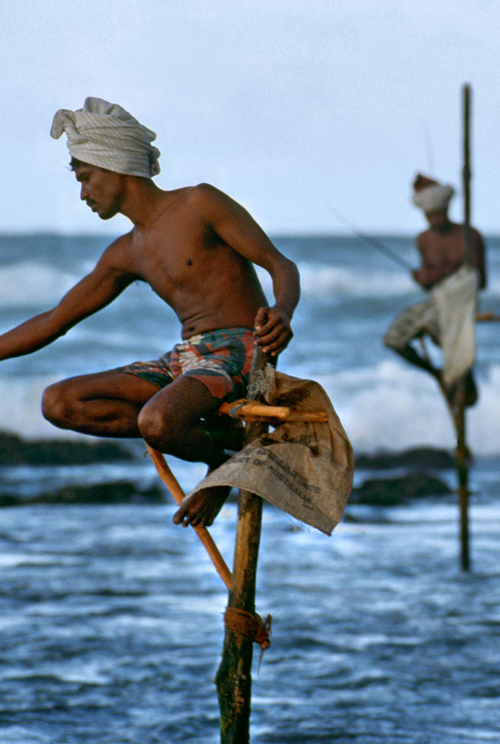
Most visitors to Sri Lanka head to the beach destinations of the southern coast, mostly situated south of Colombo. Each destination has developed its own distinctive character and highlights, and all are within easy reach of the capital. Let’s start with Negombo (37km from Colombo), situated only 6km from the Bandaranaike International Airport and therefore an excellent option for those on a short trip to the island or restricted to Colombo. The town has a long history of tourism and a wide beach, but also tempts the visitor with Dutch canal boat tours, a colourful fish market, and lively bars after dark. Equally convenient for those visiting the capital is Mount Lavinia beach – a mere 12km south of the city centre. The beach is a great place to stroll in the evening and on holidays, and enjoy dining at one of the many and varied restaurants. Recently it has become a night-time destination for some of the most high profile parties in Colombo.
Moving down the coast, the visitor leaves the urban sprawl and begins to sense the more relaxed nature of the south-west coast. Wadduwa (35km from Colombo) is a favourite weekend destination for many Colombo dwellers and features one of the most beautiful hotels on the coast.
Kalutara (42km from Colombo) hosts a number of star-class hotels, another typically stunning beach, and also a majestic three-storey Buddhist temple, which has the world’s only hollow stupa. The road finally joins the coastline after crossing the railway tracks at Payagala and from this point onwards you are treated to a stunning drive overlooking cove after cove of pristine beach.
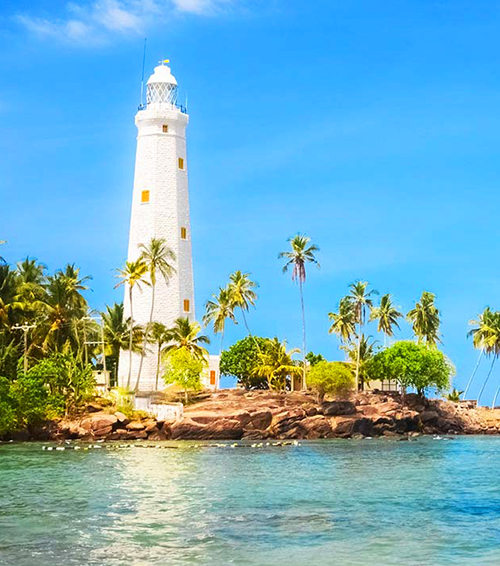
Bentota (62km from Colombo) remains one of the most delightful beach resorts of this coast with large star-class hotels, exclusive boutiques, and even the delightful gardens of Bevis Bawa – brother of Sri Lanka’s most famous architect. On top of all this, Bentota boasts wide, picturesque beaches, and the Bentota Ganga (river) on which tourists can take a cruise inland or take part in water sports. From Bentota onwards, beaches stretch before the visitor consistently through Induruwa until finally we reach Hikkaduwa (98km from Colombo) – one of the most famous beach resorts in the island. Hikkaduwa is renowned for its diving and coral reef, as well as its surfing and nightlife.
The historic port city of Galle(116km from Colombo) with its UNESCO World Heritage Site – the Dutch Fort – and boutique hotels a little beach. But just south of Galle is the famous beach of Unawatuna (120km from Colombo) which continues to be a favourite of most visitors to Sri Lanka in search of sun, sea and sand. Unawatuna was voted among the top 12 beaches in the world and boasts excellent diving, a relaxed atmosphere and lively nights. Most accommodation here is of the guest-house variety suited to independent travellers. For those looking for luxury accommodation, it would be wise to stay in Galle Fort and visit Unawatuna during the day.
Throughout the stretch of beach from Negombo to Unawatuna there is ample opportunity to take part in water and beach-sports, experience the highest standard of service and accommodation, and yet still be within easy reach of the capital and the airport. The best time to visit the southern beaches is from November to April when the sun shines temptingly while the monsoon is on the east coast.
The deep south
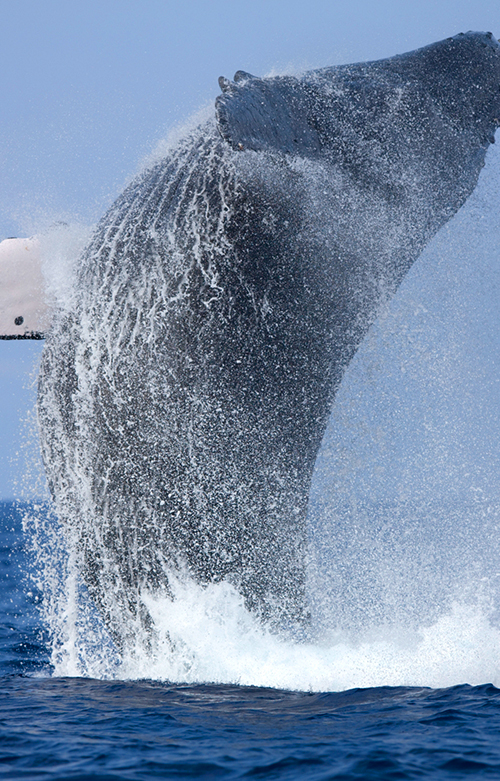
For those who are happy to travel slightly further comes the joy of new discoveries, and of remote beaches in the deep south of Sri Lanka. Weligama bay (143km from Colombo) is simply picturesque, with stilt-fishermen perched out to sea and catamarans gliding by. For those who are looking for something special. Taprobane Island can be waded to from the bay.
Just past Weligama lies Mirissa (155km from Colombo), which many feel is the best beach destination in the deep south as it retains an unspoilt fee land features a beautiful cove. A favourite with surfers, Mirissa is a place for the sporty and laid-back traveller. Finally on this stretch of coastline comes Tangalle (195km from Colombo), which boasts stunning deserted beaches that stretch as far as the eye can see, and the chance to watch turtles at Rekawa, and visit the nearby rock temple of Mulkirigala with its cave paintings and unforgettable views of the countryside.
The east coast
For a truly pristine, unadulterated beach experience, there is no place better than the east coast. Nilaveli and Uppuveli (271km from Colombo) lie to the north of Trincomalee and have for many years provided warm hospitality on stunning wide sandy beaches. Offshore liesPigeon Island – a treat for divers with its vibrant coral gardens and swarms of tropical fish. From here the visitor can also discover hot springs, the fifth largest natural harbour in the world at Trincomalee, and numerous revered Buddhist and Hindu temples.
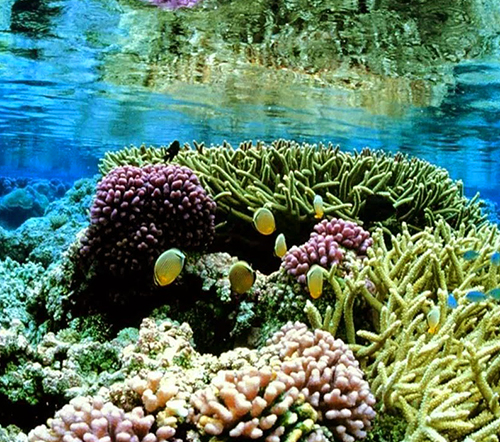
Near Batticaloa are Kalkudah and Pasekudah beaches (346km from Colombo), which are the least –visited on the east coast. Altogether they form 6km of fine sand and calm aquamarine seas that benefit from the protection of an offshore coral reef. Finally, on the east coast is Arugam Bay (314km from Colombo), with its well-established surfing scene and untouched beaches that stretch both to the north and to the south of the town. Close by is the Lahugala National Park, which hosts an array of tropical birdlife and herds of elephants.
The north coast
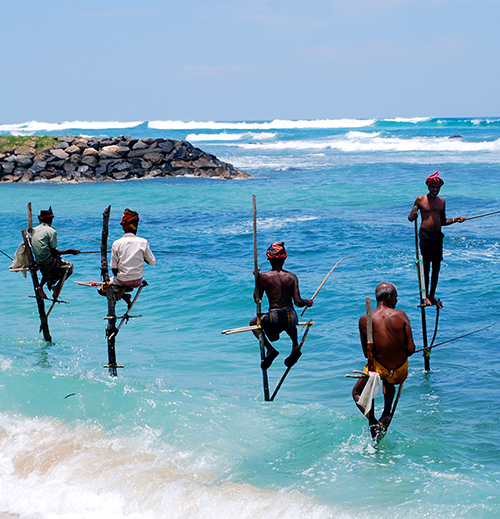
The north of Sri Lanka offers its own distinctive beach experience, with offshore islands dotted around the Jaffna (396km from Colombo) coast, virgin beaches fringed with Palmyrah trees such as the famous shallow transparent waters of Casuarina Beach, and the wild and unforgettable sand dunes of Manalkadu. On the north-west coast of Sri Lanka is Kalpitiya (150km from Colombo)with its pristine beaches and azure sea which plays host to dolphins and whales during the season, and is also home to the famous Bar-Reef – the largest coral reef in Sri Lanka.
The best time of year to visit the pristine north and east coast beaches is from May to September.
Wherever you choose to lay your towel, be sure to take plenty sunscreen and water with you. Even when cloudy, the tropical sun is extremely strong and the wise visitor will either cover up with clothing or with sunscreen. Remember that dehydration can be a major problem if you spend time on a tropical beach. Finally, please respect the beach environment, refrain from littering and don’t buy illegal souvenirs made from corals or turtle shells.
The Deep Blue Adventure
For divers, places to visit are Negombo, Hikkaduwa, Unawatuna, Weligama, Mirissa, Tangalle, Pigeon Island and Bar Reef near Kalpitiya. Not only will you encounter exotic reef fish and some of Sri Lanka’s 138 species of corals, but you have the chance to dive on some of the island’s submerged shipwrecks. If you prefer to remain above water but love sea-life, then there is the chance to go whale and dolphin-watching in Mirissa, Trincomalee and Kalpitiya. For those who like to surf then head for Hikkaduwa and Arugam Bay.
Whether you yearn for a five-star beach resort, a laidback surfer’s paradise or a wreck dive among multi-coloured tropical fish, Sri Lanka has the right beach destination for you. Amazingly, all of these beaches are within a day’s journey of the capital – a journey that reveals many of the different aspects of the island’s physical diversity – all in all, truly a wonderful experience indeed.
Hill Country
Mist –shrouded mountains, rolling tea plantations, cascading waterfalls and quaint hilltop villages –are some of the enchanting aspects of the hill country.
A short distance by car or r ail from Colombo, this region offers you the chance to escape into a world that scarcely seems possible in the tropics. With surreal landscapes, cool climes and a rich heritage, the hill country is a haven for nature lovers, hikers, adventure seekers and anybody simply in search of peace and tranquillity.
Royal City of Kandy

Nestled in lush green hills and built around a scenic lake, the Royal City of Kandy, at 500m above sea level, is the hub of any visit to the hill country. Kandy, a UNESCO World Heritage Site, was the last stronghold of resistance to colonial rule. Even today, Kandyans pride themselves on their distinctive architecture, music, dance and art. The showpiece of the city is the Dalada Maligawa or Temple of the Tooth, which hosts the Buddha’s sacred tooth relic.
Each year, in July or August, the city holds the Esala Perahera, a spectacular display of medieval pageantry replete with caparisoned elephants, whirling fire dancers and pulsating drummers.
The journey from Colombo to Kandy is a treat with fine views of the scenery afforded from the road or railway. Not to be missed Enroute is the Pinnawela Elephant Orphanage, where visitors can get up close and personal with over 60 pachyderms, ranging from cute babies and mischievous adolescents to majestic tuskers.
Just outside Kandy at Peradeniya, the Royal Botanical Gardens contains a bewildering array of local and foreign species set in a tranquil site adjacent to the mighty Mahaweli Ganga, Sri Lanka’s most important and longest river.
For many centuries, traders have been drawn to the island by the allure of its spices. Numerous spice gardens to the north of Kandy allow you to see how cinnamon, cloves, nutmeg, pepper and cardamom all continue to flourish in the island’s fertile soil.
Golfing enthusiasts should not miss the stunning Victoria Golf Course, set on the edge of a vast reservoir 20km east of Kandy.
Knuckles Mountain Range
Further east of Kandy, the Knuckles mountain range, a UNESCO World heritage site, provides fearless travellers with the opportunity to experience Sri Lanka at its most primal. A rugged area of pristine wilderness – including rare dwarf cloud forest – the Knuckles has 27 peaks over 1,000m, with the highest rising to nearly 2,000m.
It is also home to an exceptional array of endemic animal and plant species. Though largely uninhabited, the region contains some of the most isolated hamlets in the island, where it is still possible to witness a way of life largely untouched by modernity.
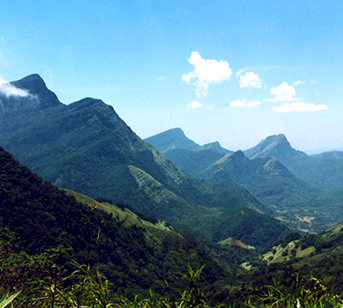
Nuwara-Eliya
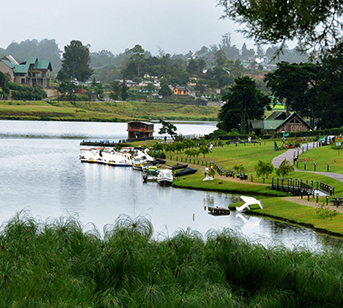
The heart of the southern hill country is Nuwara-Eliya; Sri Lanka’s highest town and a favourite hill station during British colonial times.
The town is still touted as “Little England” an illusion maintained by the presence of an 18-hole golf course, a racecourse, the Victoria Park and excellent trout fishing in nearby lakes and rivers.
The temperature in the area can drop to close to freezing at nights and it is common to see smoke rising from the chimneys of the many Tudor-style manors.
Nuwara-Eliya is a great base to explore the surrounding countryside and there are many walks on offer, including hiking around the lower slopes of the thickly forested Mount Pidurutalagala, at 2,555m the island’s highest peak. A visit to the Hakgala Botanical Gardens, a short distance from Nuwara-Eliya, is also recommended.
Tea Country
Among the most iconic vistas of the hill country are the rolling tea estates that carpet vast swathes of terrain in an emerald sea. Introduced to the island in the late 19th century by the British, tea remains of vital importance to the economy. Some of the finest teas in the world are produced in the hill country and a visit to a tea factory during a trip to this region is highly recommended.
Watch how the plucked tea is dried, crushed, fermented and fired using machinery that as remained largely unchanged since the Victorian times.

Horton Plains/Ella
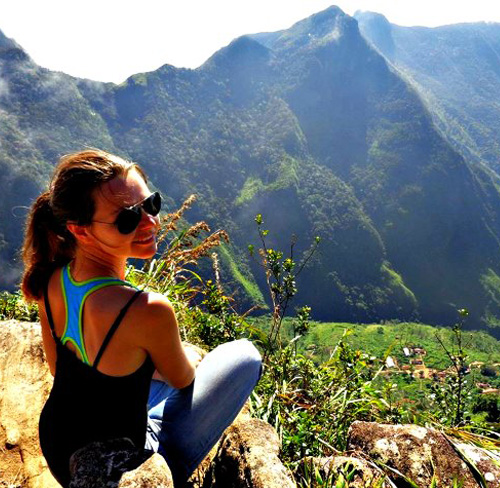
South of Nuwara-Eliya, the Horton Plains is a hauntingly desolate, windswept plateau set an elevation of over 2,000m.
A world apart from the rest of Sri Lanka, the plains offer excellent trekking, including a 9km circular walk to Worlds End, where the cliff plunges dramatically for nearly 1,000m, offering marvellous views to the south.
Herds of sambar deer, beautiful lizards and many endemic bird species enhance the Horton Plains experience and there is always the hope of a glimpse of a leopard.
Thrill- seekers will also find a range of activities such as canoeing and rock climbing on offer.
Perched on a hill side and surrounded by tea plantations and pine forest is the quaint village of Ella.
With pretty little bungalows and neat flower filled gardens, Ella is blessed with one of the finest views in Sri Lanka and makes a good location from which to explore other sites of interest.
Nearby is the ancient Ravana rock temple, the Ravana Ella cave and Ravana Ella falls, all linked by legend to the Ramayana, the 2,000-year-old Hindu epic. It was in Ella that the demon-king Ravana is said to have hidden Princess Sita after abducting her from her husband Rama in India.
From Ella, it is also possible to visit the remarkable rock carvings at Buduruwagala, one of the island’s most atmospheric ancient sites. Other hill country towns worth checking out include Haputale, Bandarawela and Badulla.
Train through the hill country
For visitors who are not in a hurry, riding the hill country on a train is an excellent way to savour the delights of this region.
Snaking its way through tea plantations, pine forests and plunging ravines, this is rightly regarded as one of the finest railway journeys in the world. Ascending to a height of over 2,000m, the journey affords stunning views of the scenery plus a chance to experience the romance of a mode of travel attuned to a bygone era.

Adam’s Peak (Sri Pada)

Soaring above the surrounding hills in the southwest of the hill country is Adam’s Peak. Known also as Sri Pada (Sacred Footprint) due to the curious footprint-shaped indentation at its summit.
The mountain is considered sacred to adherents of all Sri Lanka’s main faiths – Buddhists, Hindus, Muslims and Christians – and attracts many pilgrims between December and May each year.
The ascent requires stamina rather than mountaineering skills and consists of over 4,800 steps to the summit.
The best time to make the ascent is during the night, when the twinkling lights of the illuminated pathway appear to rise like stairway to heaven.
Dawn at the summit is an intensely spiritual experience. Pilgrims whisper reverently to each other as the sun rises and casts a perfect triangular shadow on the clouds below, one of the island’s more unusual natural phenomena.
Kitulgala
In the west of the hill country is the scenic village of Kitulgala. The landscape here is particularly dramatic with vertiginous forest-clad cliffs plummeting down to the wild waters of the Kelani River.
This is also the site of some of the best white water rafting in Sri Lanka with grade three rapids some 5km upstream.
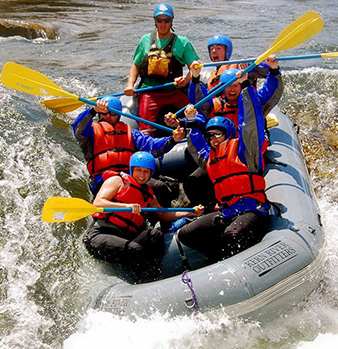
Ratnapura & Sinharaja Forest Reserve
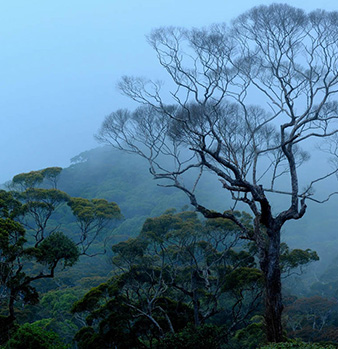
Sri Lanka has been famous for its gems since antiquity – legend has it that a Sri Lankan ruby was given by King Solomon to the Queen of Sheba.
Ratnapura, settled in the south-western corner of the hill country, is the island’s richest source of gems.
A trip to a working gem mine provides a fascinating glimpse into the mining process which is still largely carried out by hand.
Sinharaja Forest Reserve, a UNESCO World Heritage Site is the last extensive stretch of virgin rainforest on the island. Stretching for nearly 30km across the wet zone at the southern edge of the hill country, Sinharaja is a global biodiversity hotspot. Damp, mysterious and teeming with life, it is a must visit for those seeking an authentic jungle experience.

